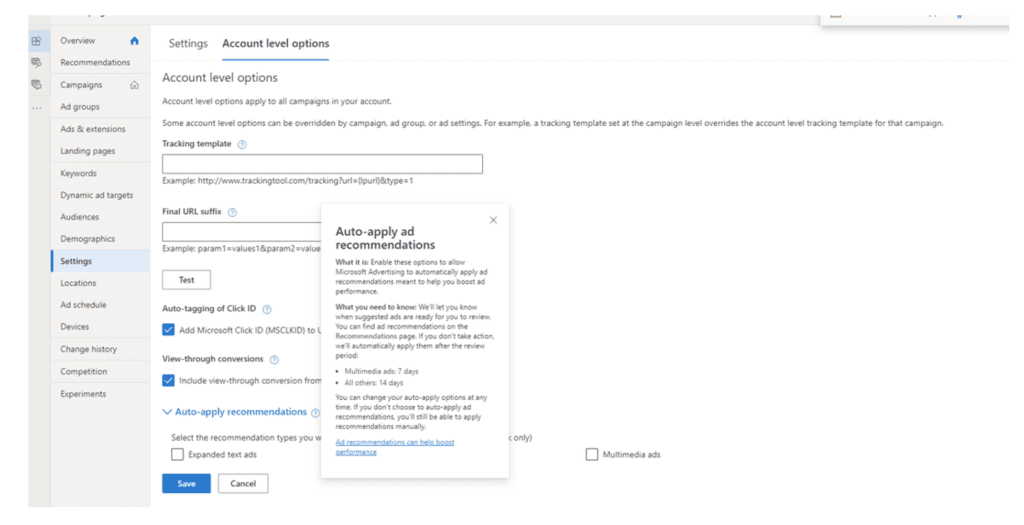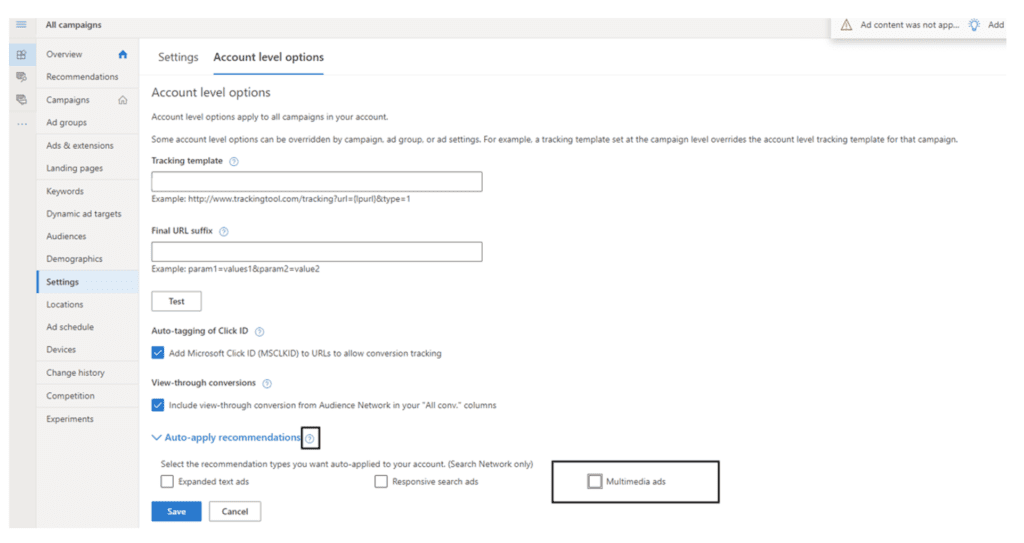Microsoft Advertising recently launched a beta version of a new ad format, Multimedia Ads, that seeks to make ads in search results more visually appealing. This could be a useful format for lifestyle brands (especially smaller ones) that rely on the power of images to make their products. It’s also important that Microsoft Advertising clients pay close attention to how Microsoft is rolling out the feature.
What Is the Multimedia Ads Format?
The Multimedia Ads format consists of image-rich ads that appear on search results pages. With this ad format, Microsoft uses machine learning to suggest to advertisers the optimal combination of their own images, body, copy, and headlines for searches occurring on Bing. If you lack visual assets, Microsoft will auto-create them. (This is an approach similar to Google’s.) As reported in Search Engine Land,
The recommendations will use AI to speed up the launch of Multimedia Ads for your brand. If you’re not interested, you’ll have seven days to apply or dismiss recommendations. If you don’t choose either, they’ll be automatically applied. “You can also opt out of the auto-apply functionality at the account level,” according to the announcement blog.
Here’s how Microsoft explains auto-apply on its campaigns dashboard:
![]() Considerations to Keep in Mind about Multimedia Ads
Considerations to Keep in Mind about Multimedia Ads
Now, this ad format could be appealing to a business that lacks the time and resources to create a campaign – say, a small mom-and-pop business. And the visual format could be really appealing for brands in industries such as travel and hospitality, where images are even more important. Multimedia Ads gives such a business the means to vary their ads so long as the business does not mind giving up control to Microsoft’s AI engine to do all the heavy lifting. But as Search Engine Land notes, “The auto-recommendations mean advertisers will have to be on the lookout to make sure any tests or ads they’re launching don’t end up going in a direction they don’t want.”
In other words, the feature could create more work for a business.
Here are some caveats we have noticed as well:
It’s important that Microsoft clients check their campaigns dashboards. We have discovered instances where Microsoft activated the ad format automatically for a given campaign. It’s up to the Microsoft Advertising client to proactively uncheck the “auto-apply recommendations” features boxes (see the bottom of the image below – and note that we unchecked auto-apply recommendations):
In fairness, we should note that Google has also used the approach of automatically applying features to its advertising products, thus putting the burden on the client to disable a feature.
You might not like the images that Microsoft suggests. Microsoft might suggest generic and uncompelling stock images with its AI. We much prefer manually uploading our own images, where we have more control over their quality.
You might not like the ad copy that Microsoft suggests. Microsoft’s AI engine draws from past copy of yours to create new copy. But what worked for a previous ad might not apply to the one you want to run. If you carefully manage the tone of your ad copy, then the AI-generated recommendations might not be for you.
The format could make it more difficult for you to do A/B testing, as well.
Bottom line:
- Multimedia Ads is a step in the right direction because Microsoft Advertising is dialing up the power of images during the visual age.
- Microsoft still has work to do with the quality of the images its AI engine suggests.
- Microsoft Advertising clients should review their campaign dashboards and uncheck the “auto-apply recommendations” options if you are not ready to use the ad format.
- Whether you use the ad format’s AI features depends on how much control you want to hand over to Microsoft Advertising.
- Consider using the feature but without the AI-generated recommendations.
Contact True Interactive
To make online advertising, including Microsoft Advertising, succeed for you, contact True Interactive. We help clients across multiple industries succeed online.
Photo by Afif Kusuma on Unsplash


